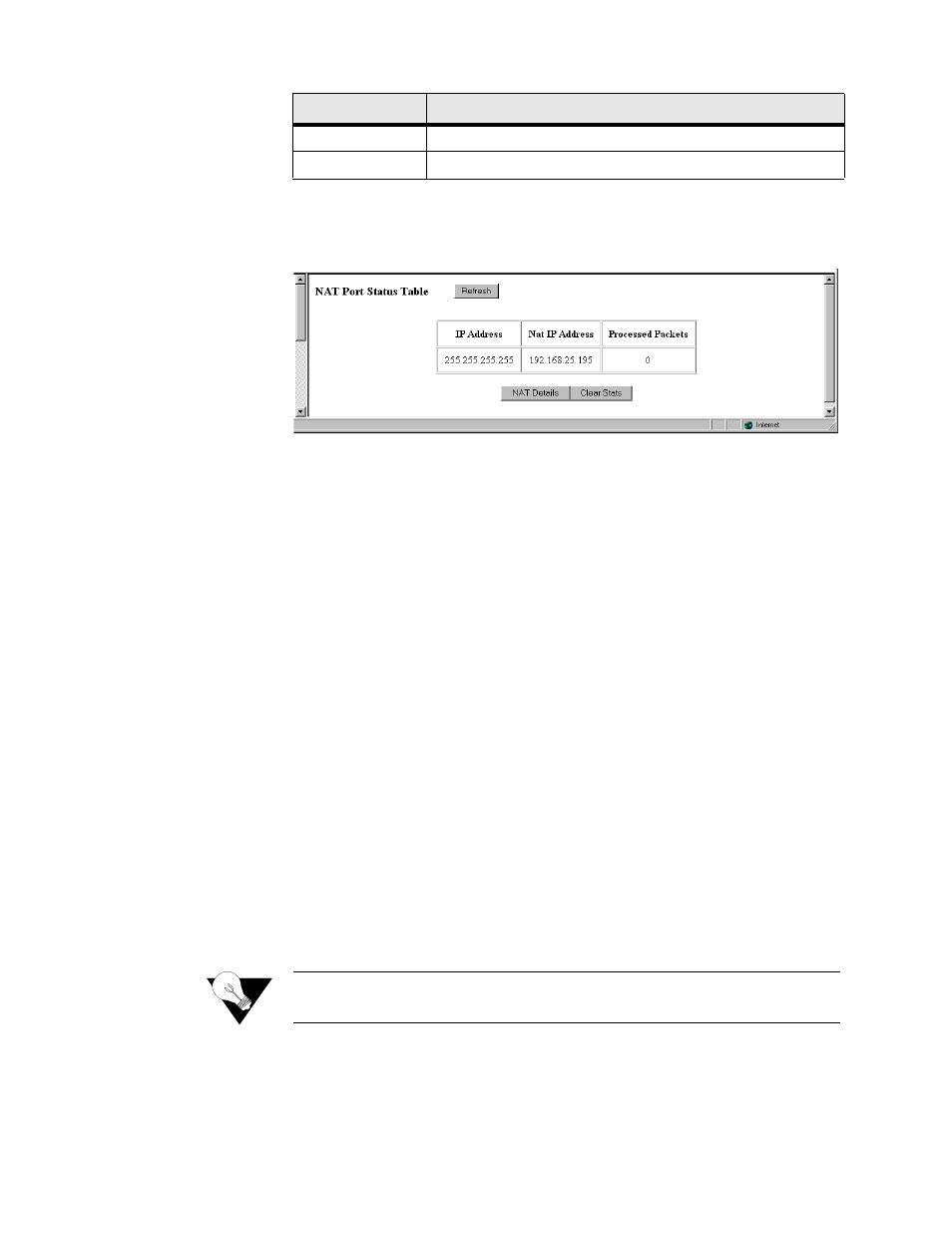Dynamic host configuration protocol (dhcp), Dynamic host configuration protocol (dhcp) -62 – Verilink WANsuite 6x30 (34-00315.B) Product Manual User Manual
Page 90

3-62
W A N s u i t e 6 x 3 0
The NAT Port Status Table displays for each port the processed packets from
specific IP addresses.
Figure 3.61
NAT Port Status Table Screen
IP A d d ress
Original IP Address of the host.
N AT IP A d d ress
Translated IP Address of the host.
P rocessed P a ck ets
Number of packets processed by NAT for this address.
Dynamic Host Configuration Protocol (DHCP)
DHCP provides a mechanism through which computers using TCP/IP can
obtain protocol configuration parameters automatically through the network.
The most important configuration parameter associated with DHCP is the IP
address. A computer must initially be assigned a specific IP address that is
appropriate to the network to which the computer is attached, and that is not
assigned to any other computer on that network. If a computer moves to a
new network, it must be assigned a new IP address for that new network.
DHCP can be used to manage these assignments automatically.
DHCP has other important configuration parameters also, such as the subnet
mask, default router, and Domain Name System (DNS) server. Using DHCP,
a network administrator can avoid “hands-on” configuration of individual
computers through complex and confusing setup applications. Instead, those
computers can obtain all required configuration parameters automatically,
without manual intervention, from a centrally managed DHCP server. DHCP
is available on the 10/100 Ethernet port only.
NOTICE:
You must Save and Restart for any changes in DHCP configuration
parameters to take effect.
NAT Port Status
Displays the NAT Port Status Table screen (Figure 3.61).
Refresh
Refreshes data on the current page.
Button
Function